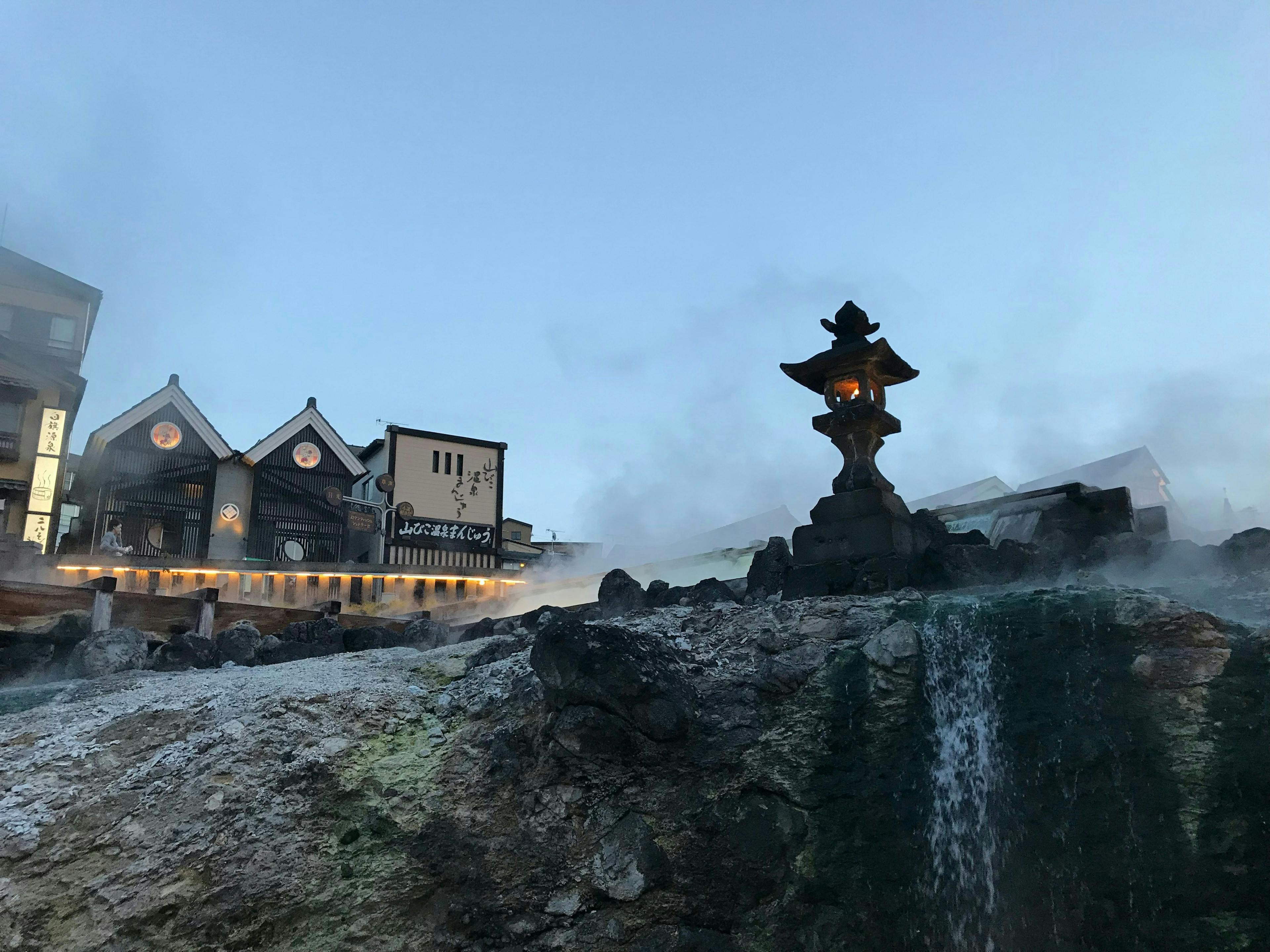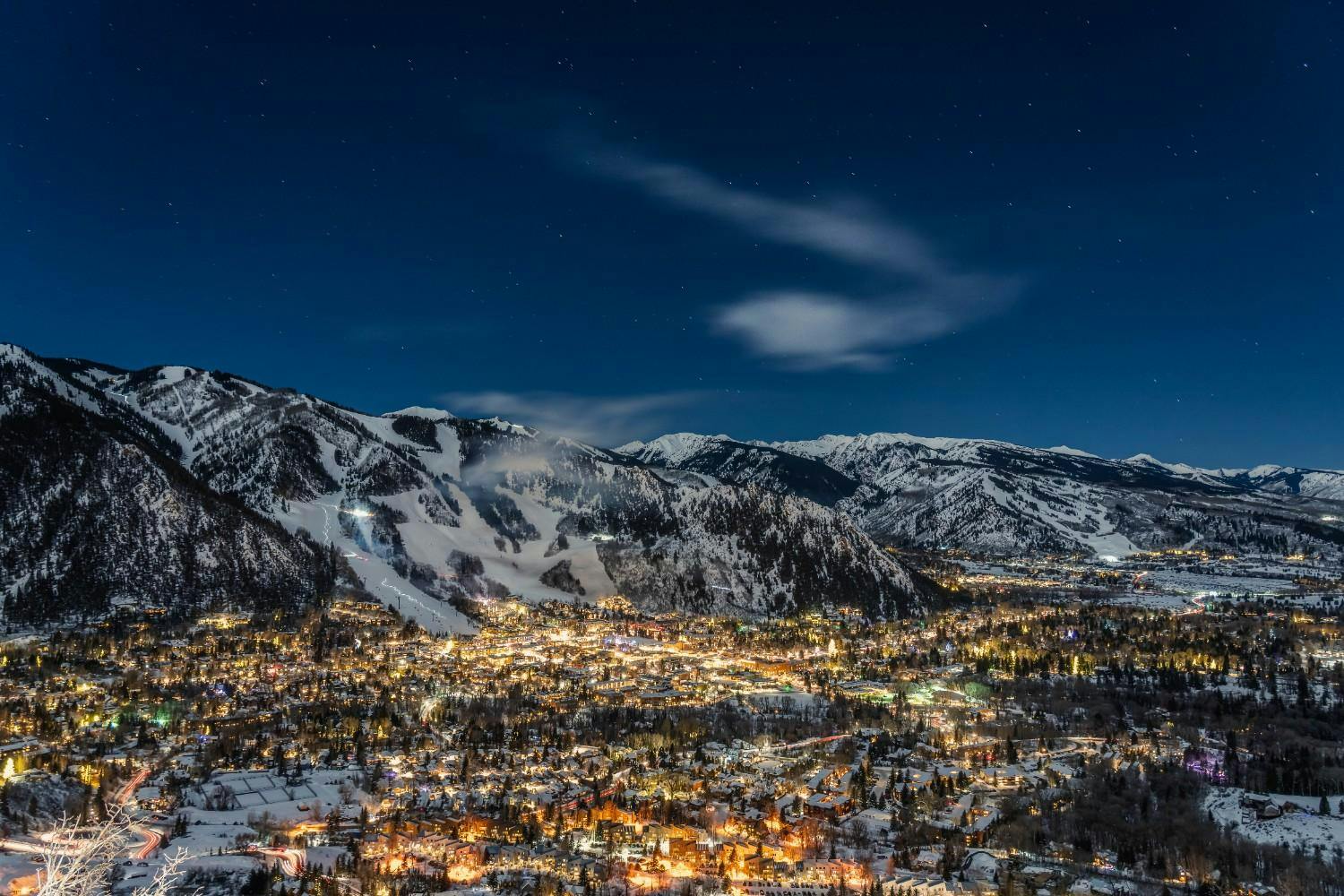- Ski.com Home
- Blog
- Skiing the Japanese Alps
Skiing the Japanese Alps

The Japanese Alps—named for their striking resemblance to the stunning glacier-carved slopes of the European Alps—are located 130 miles west of Tokyo on the main island of Honshu. They feature towering summits over 10,000 feet, and aside from Mt. Fuji, they are home to the highest mountains in all of Japan.

The Japanese Alps are divided into three main ranges: the Northern Alps (Hida Mountains), Central Alps (Kiso Mountains), and Southern Alps (Akaishi Mountains). All three ranges share one unbeatable feature: the legendary Japow—Japan’s iconic, deep, and dreamy powder snow. These jutting peaks were formed by volcanic activity, much like the mountains on the northern island of Hokkaido. Like most geothermal regions, there’s no shortage of hot springs, known as onsens in Japan, to soak in after a day on the slopes.

The Japanese Alps are a winter sports paradise, home to several dozen ski areas, many of which surround Nagano, the host city of the 1998 Winter Olympics. With world-class terrain and legendary deep powder, the Japanese Alps and Nagano draw thrill-seekers from around the globe, eager to dive into its alluring alpine adventures, rich cultural highlights, and unforgettable après-ski experiences.

Popular Nagano Ski Resorts
Hakuba Valley
Hakuba Valley, which is comprised of 11 ski areas, is by far the most famous ski domain in all of the Japanese Alps—particularly among international skiers. Easily accessed via a 90-minute bullet train from Toyko, Hakuba provides tons of amenities and services for English-speaking guests, as well as an ideal variety of Western-style lodging options.
Combined, Hakuba Valley offers 137 kilometers (85 miles) of skiing, over 200 trails, and 135 chairlifts. While most resorts aren’t connected by slopes—except for Hakuba 47 and Goryu, and Cortina and Norikura—all are accessible with one lift ticket, and shuttle buses make it easy to hop between each base area. This level of convenience is uncommon at Hokkaido ski resorts.
With miles of diverse terrain across 11 ski areas, there’s something for everyone. Beginners can enjoy plenty of mellow slopes, while freestyle riders have 9 terrain parks to play in. For advanced to expert skiers, the majority of the runs are moguls—which are a favorite of local, Japanese skiers.
If you’re looking for tree skiing, Hakuba can be a challenge, as most resorts have a pretty strict policy when it comes to off-piste, gladed access. The exception to that rule is the Cortina ski area, which is where you’ll find all the powder-loving tree skiers and riders. If you’re willing to earn your turns, the Hakuba backcountry offers a powder lover’s paradise. To ensure you don’t get lost, have any other mishaps, and find the best powder pockets, hiring a professional guide is a must.
What are the top resorts in Hakuba Valley according to a seasoned Nagano local? Happo-One, known for its classic ski slopes and challenging terrain for advanced snowboarders, and Hakuba 47 and Goryu, which are perfect for newbies and boast an epic terrain park. For the best chance at riding Japow, January and February are your prime months.
Top 5 Reasons to Go to Hakuba Valley According to Recent Travelers:
- Japow
- Onsens (natural hot springs)
- Soba noodles
- Convenient access from Tokyo
- World-class diverse terrain
Shiga Kogen
Famous for hosting the women’s downhill, slalom, and super G events in the 1998 Olympics, Shiga Kogen provides an array of on- and off-mountain experiences. Made up of 19 different ski areas, which are mostly linked via slopes and lifts, the Shiga Kogen ski domain features 80-plus kilometers of terrain all accessed on one convenient shared lift ticket.
Shiga Kogen boasts an incredible variety of slopes, all paired with high-quality snow thanks to its title as Japan’s highest ski resort. They named it Shiga Kogen for a reason—“Kogen” translates to heights or highlands! Much like Hakuba, Shiga Kogen offers skiers and riders of all ability levels terrain options, however, off-piste tree skiing is banned here. Intermediates will especially appreciate the freshly groomed ‘roy’ and mogul aficionados will be pleased, too.
While Shiga Kogen may lack an endearing village vibe and the bustling scene of shops, restaurants, and nightlife, it more than makes up for it with its proximity to the iconic Jigokudani Snow Monkey Park—a bucket-list experience you won’t want to miss. Here, you’ll have the unforgettable chance to watch wild Japanese snow monkeys soak and play in natural hot springs. After taking in the show, make your way to nearby Yudanaka or Shibu Onsen for a rejuvenating soak of your own.
Top 5 Reasons to Go to Shiga Kogen According to Recent Travelers:
- Japow
- Olympic history
- Interconnected slopes
- Jigokudani Snow Monkey Park
- Oyaki (traditional Japanese dumplings)
Nozawa Onsen
This charming hot spring and ski-resort village is located in the northern part of the Nagano Prefecture and is a must for those seeking an authentic cultural experience. Often considered the birthplace of skiing in Japan, it boasts incredible wide-open groomers and perfectly sculpted mogul runs. But what truly sets Nozawa apart are its steaming hot springs and charming village streets—a magical après-ski experience unlike anywhere else.
The village was first founded in the 8th century when the hot springs were discovered. Steam drifts through the village streets, creating a cozy atmosphere, and many of the traditional Ryokan inns feature their own private onsens. Western-style hotels are few and far between — most accommodations stick to classic Japanese style, with Tatami mat floors and futon bedding for an authentic and unforgettable stay. Make sure to book your accommodation early, as Nozawa is so popular that many places fill up months in advance.
Nozawa Onsen is a top pick for its incredible mix of terrain and reliable snowfall, serving up dreamy powder runs that cater to riders of all skill levels. Hiring a backcountry guide is the best way to explore Nozawa’s notoriously steep off-piste terrain. Unlike some other Nagano resorts, Nozawa’s ski patrol takes a more laid-back approach to off-piste zones, making it a favorite for those seeking fresh tracks beyond the groomers.
Top 5 Reasons to Go to Nozawa Onsen According to Recent Travelers:
- Japow
- Laid-back off-piste access
- Incredible terrain for all levels
- Authentic Japanese village charm
- Onsens
Is Hokkaido or Nagano better for skiing?
Both Hokkaido and Nagano are incredible ski destinations, each offering unique experiences. While Hokkaido is famous for its legendary Japow, you can still find it in Nagano. On average, the Japanese Alps and Nagano receive slightly less snow than their northern counterparts in Hokkaido. Nagano resorts typically see between 400 and 500 inches of snow annually, while Hokkaido averages around 600 inches. That said, both regions receive an impressive amount of snow.
Hokkaido is often praised for its "better" snow, with higher snowfall and notorious light, dry powder that’s perfect for skiing and snowboarding. While Nagano's snow may be a bit heavier and wetter due to its location in the Japanese Alps, it still delivers excellent conditions for skiers and riders alike. When it comes to lift lines and pricing, Hokkaido tends to be more expensive and attracts larger crowds compared to Nagano.
No matter where you choose, you’re guaranteed an epic experience—both regions offer incredible terrain, unforgettable adventures, and plenty of reasons to keep coming back for more. You can’t go wrong!
How to get to the Japanese Alps
Reaching the Japanese Alps is fairly straightforward with most Nagano ski resorts less than a two-hour bullet train ride from Tokyo. Numerous airlines fly into Tokyo’s Narita International Airport, and with the city’s efficient and fast rail system, ski travelers don’t need to hassle with shuttles, shared rides, or car rentals. Just hop on the train and you're on your way to the slopes!
TAGGED: Japanese Alps
Melissa Szaro
Author
Latest blogs
View AllHow Our Free White (Ski) Glove Service Works:
Reach out to a Ski.com Mountain Travel Expert by phone, chat, or our online form. Share details about your group size, interests, and budget and your Expert will begin to craft your dream ski vacation.
Get a curated proposal with personalized suggestions from your Expert via email. Book directly online or request additions or revisions from your Expert until it’s perfect.
If you have questions, want to add or modify your reservations or need anything assistance, your Expert is always by your side to help before, during and after your trip.
Sign up for our newsletter
Sign up for exclusive offers, news, updates and more.




